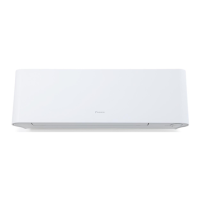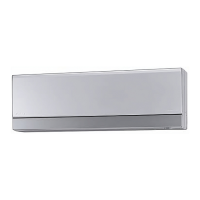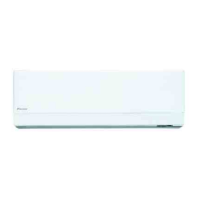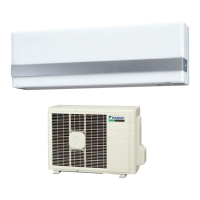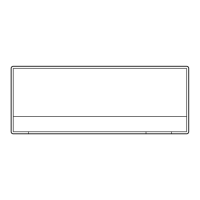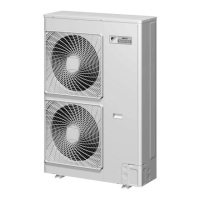Why Daikin FTXG25LV1BS hot air does not flow out soon after the start of HEAT operation?
- JjermainebrownAug 2, 2025
If hot air does not flow out soon after starting HEAT operation on your Daikin Air Conditioner, please wait for 1 to 4 minutes.

Why Daikin FTXG25LV1BS hot air does not flow out soon after the start of HEAT operation?
If hot air does not flow out soon after starting HEAT operation on your Daikin Air Conditioner, please wait for 1 to 4 minutes.
| Cooling Capacity | 2.5 kW |
|---|---|
| Power Supply | 220-240 V, 50 Hz |
| Indoor Unit Dimensions (HxWxD) | 295 x 800 x 229 mm |
| Outdoor Unit Dimensions (HxWxD) | 550 x 780 x 285 mm |
| Weight (Outdoor Unit) | 32 kg |
| Outdoor Unit Weight | 32 kg |
| Refrigerant | R32 |
| Indoor Unit Noise Level | 19 dBA |
Detects human movement for energy saving.
Allows saving up to 4 timer settings daily.
Directs airflow to prevent direct contact with body.
Explains safety classifications and general warnings.
Details risks related to refrigerant, wiring, and water.
Covers precautions for outdoor units and electrical work.
Guidance on choosing an appropriate installation location.
Details the air inlet, outlet, flaps, louvres, and sensors.
Explains the multi-monitor lamp and signal receiver.
Identifies air inlet, outlet, drain hose, earth terminal.
Explains how to aim and use the remote controller.
Describes temperature, ON/OFF, FAN, and POWERFUL buttons.
Opening the front cover for hidden buttons.
Explains how to select modes and adjust airflow direction.
Instructions for inserting and replacing batteries.
Guidance on mounting the holder on a wall.
Step-by-step guide to set the unit's internal clock.
Explains why the clock must be accurate for timers.
How to initiate and terminate basic AC operations.
Descriptions of AUTO, DRY, COOL, HEAT, FAN modes.
How to change the desired temperature.
Advice for reducing energy consumption.
How to activate up/down and right/left airflow swings.
Using flaps and louvres for multi-directional airflow.
How to select fan speed from Auto to High.
Reduces fan noise for quieter operation.
Directs air upwards (COOL) or downwards (HEAT).
Detects people for energy saving or comfort.
How to select COMFORT AIRFLOW mode.
How to activate and deactivate the sensor.
Specific details and limitations of COMFORT AIRFLOW.
Application range and sensor detection details.
How to activate maximum cooling/heating effect.
How to return to normal operation.
Limits power consumption for energy efficiency.
Reduces noise from the outdoor unit.
How to select these operations via the remote.
Details and limitations of ECONO mode.
Step-by-step guide to set an automatic turn-off time.
How to disable a previously set OFF timer.
Step-by-step guide to set an automatic turn-on time.
How to disable a previously set ON timer.
Demonstrates setting programs for weekdays and weekends.
Details on the number of reservations and copy mode.
How to start the weekly timer setup process.
Choosing the day and program slot.
Adjusting the specific time for timer events.
Setting the temperature for the timer event.
How to copy settings from one day to another.
Verifying the copied or entered settings.
How to check current timer settings.
Turning off the weekly timer function.
Removing specific timer entries.
Clearing all programmed timer settings.
Rules for operating multiple units.
Specific quiet mode for cooling operations.
Forcing all units into a single mode.
How one room takes precedence.
Instructions for cleaning accessible parts.
Maintenance for the air-purifying filter.
Step-by-step guide for filter maintenance.
Reassembly instructions after cleaning.
How to take out the filter.
Maintenance and replacement procedures.
Steps before storing the unit.
Advice on professional servicing.
Explains flap movement, stopping airflow, and sounds.
Explains water/steam emission from the outdoor unit.
Addresses issues like no operation or weak cooling/heating.
Problems with front panels not opening/closing or mist emission.
Explains delayed heat flow and outdoor fan rotation.
Problems with timer settings and indoor unit odors.
Lists critical symptoms requiring professional help.
Guidance on proper disposal of the unit and batteries.
How to display error codes on the remote.
List of system, indoor, and outdoor unit error codes and meanings.
Interpreting LED lights for malfunctions.
Interpreting LED lights for the 2MXS series.
Visual guide to remote control buttons and displays.
Diagram showing mode transitions.


